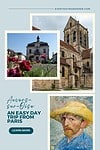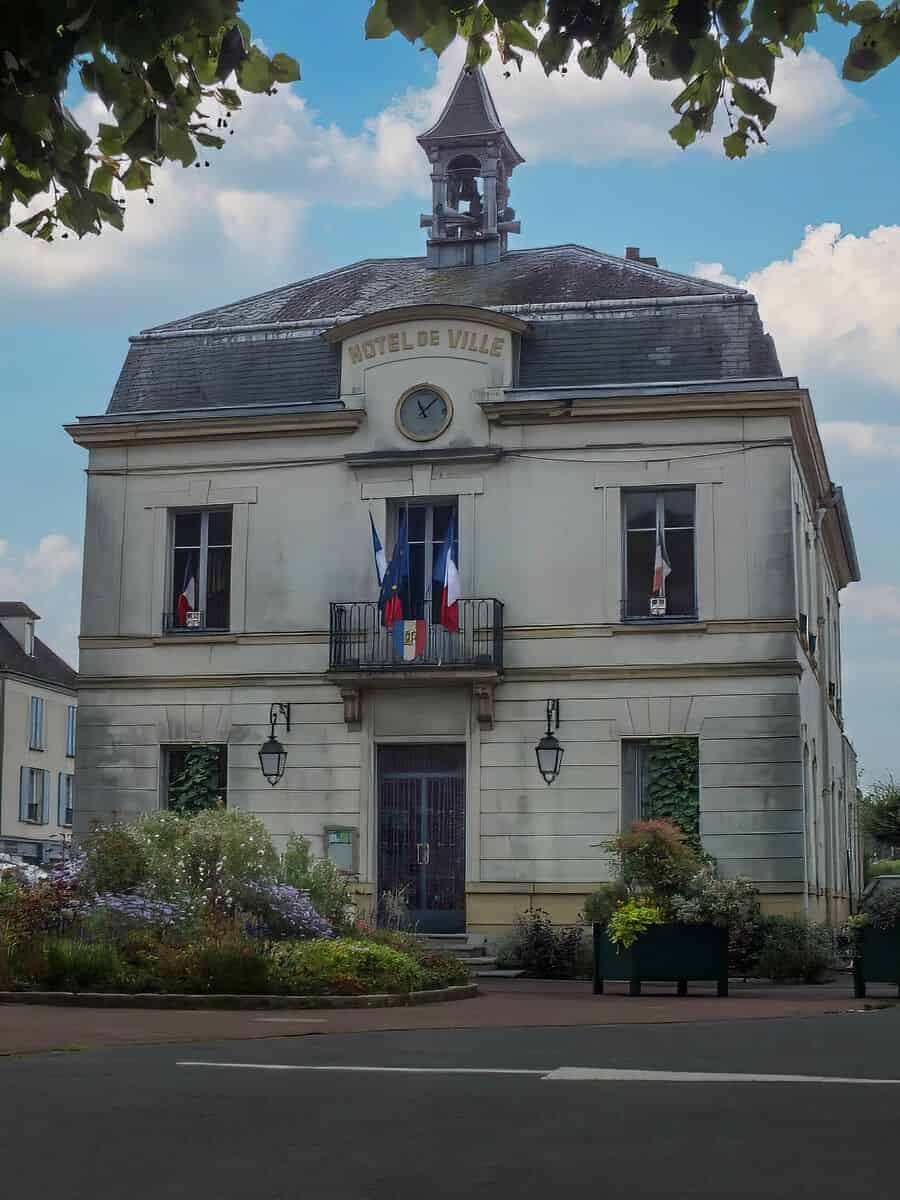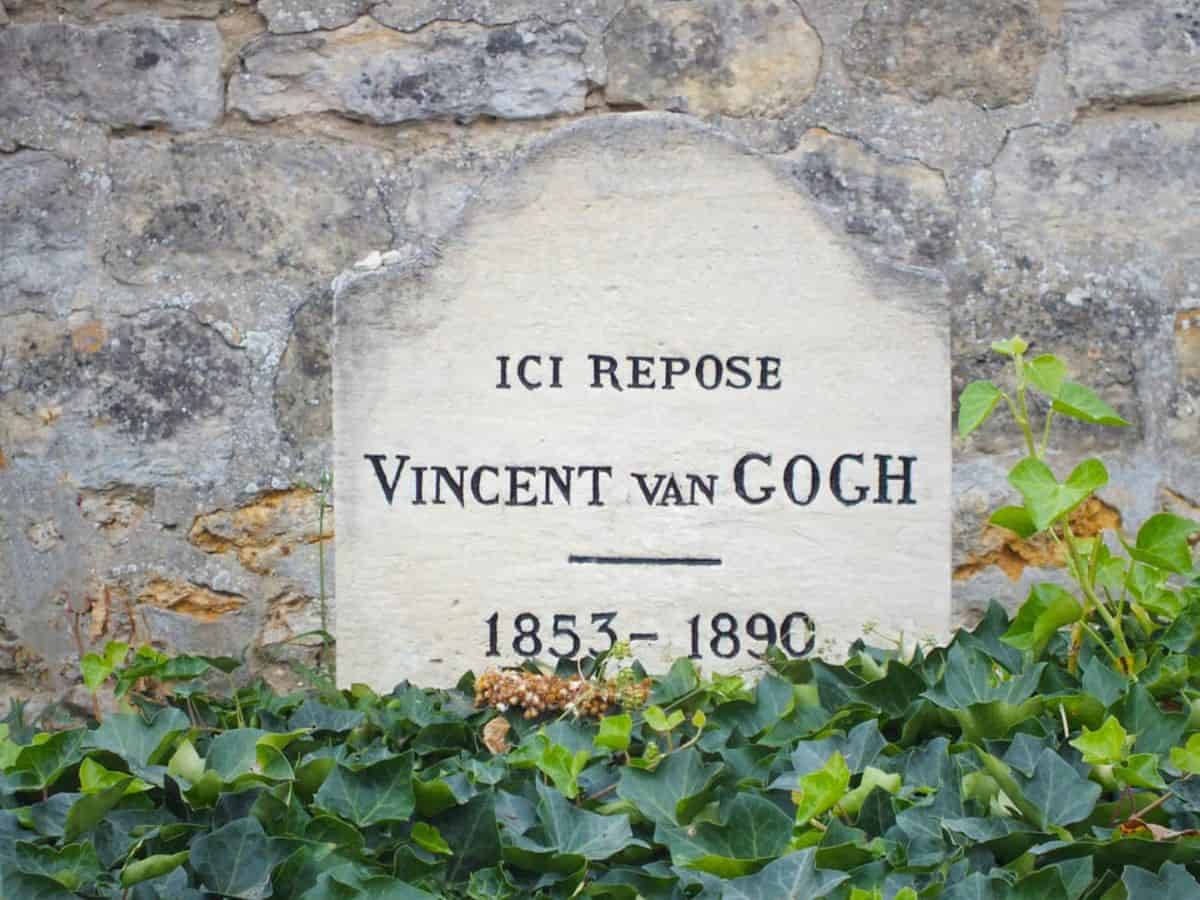In this Article
Toggle


Immerse yourself in the alluring landscapes that once captivated Van Gogh in the idyllic French town of Auvers-sur-Oise. Discover the history, charm, and artistic legacy woven throughout this enchanting haven.
Despite spending half of my childhood in Europe with an artist mother who loved sunflowers, I’d never heard of Auvers-sur-Oise, France, until 60 Minutes did a segment on it a few years ago.
With the heavy tick-tick-tick of a stopwatch kicking things off, the show’s Morley Safer wandered through the idyllic French town in connection with Van Gogh: The Life, a book that questions the generally accepted belief that the Dutch Post-Impressionist painter took his own life.
While the alternative version of the troubled artist’s demise was fascinating, I was absolutely mesmerized by the scenery. As the camera panned past the inspiration for more than 70 of Vincent van Gogh’s paintings — golden fields of wheat, darling French cottages surrounded by wildflowers, and the church topped with a clock — I decided right then and there that I would do whatever it took to visit Auvers-sur-Oise the next time I was in France.
Here’s what you need to know before planning a visit.

To help offset the costs of running EverydayWanderer.com, you’ll find affiliate links lightly sprinkled throughout the site. If you choose to make a purchase via one of these links, there’s no additional cost to you, but I’ll earn a teeny tiny commission. You can read all of the legal blah blah blah (as my little niece says) on the full disclosure page.

How to Get to Auvers-Sur-Oise
This charming home to just under 7,000 residents is nestled on the banks of the Oise River, a mere hour’s drive northwest from the hustle and bustle of Paris. It’s an easy day trip from the City of Lights. You can get there by car by heading north on A115. Or, for about $10, you can get there by train in 1.5 hours.
When I visited Auvers-sur-Oise by car, I quickly learned that I had to park in the first spot I found, then proceed on foot, because the roads are very narrow and parking spaces are limited. After all, Auvers-sur-Oise is less of a tourist attraction and more of a village where French families go about their lives.
While there are rolling hills throughout the town, Auvers-sur-Oise is quite walkable. Some areas have cobblestone streets and sidewalks as well as stone stairs. While these walkways add to the charm of the French village, they can be a bit tricky to navigate if you’re not used to them. Be sure to wear sensible shoes like tennis shoes, flats, or sandals with straps rather than flip-flops — especially if you take a walking tour in Auvers-sur-Oise. You’ll also want to be sure your shoes have adequate treads, since cobblestones can get slippery when wet.
What to Do in Auvers-Sur-Oise
Auvers-sur-Oise isn’t just a delightful break from the noise of Paris, it’s also a living piece of art history. The town’s relaxed vibe and scenic beauty won the hearts of 19th-century artists like Cezanne, Pissarro, and, of course, van Gogh. If you’re looking for a peaceful getaway with a dash of culture, this town offers the perfect blend.
Sage Advice: One of the best ways to explore Auvers-sur-Oise is with a guided walking tour.

Visit L'Auberge Ravoux
Start your day in Auvers-sur-Oise with a visit to the Auberge Ravoux, also known as the Ravoux Inn. Located in the heart of town, this two-story stucco-and-wood inn is where Vincent van Gogh spent his final months. Now known as the Maison de Van Gogh, this French historic site features van Gogh’s table at the back of the dining room and is where the artist perished on July 29, 1890.

At the top of a small staircase is the small, empty, dimly lit room where the tormented artist spent his last summer on Earth. During his time in Auvers-sur-Oise, van Gogh completed 80 paintings in 70 days. Despite now being recognized as one of the most famous and influential artists, Van Gogh only sold one painting during his lifetime. What an absolute tragedy!
Standing in room number five, where van Gogh spent his final days, is an emotional experience. As a longtime admirer of his work, I felt surrounded by both his genius and the heartbreaking disappointment and struggles that defined his life.

Admire Van Gogh’s Inspiration
Starting at the Auberge Ravoux, explore the town of Auvers-sur-Oise to see the real-world buildings and landscapes that inspired the artist’s final works. Just across the street from the inn is the Mairie d’Auvers-sur-Oise (the Auvers-sur-Oise City Hall), which was painted by van Gogh in July of 1890. In more than 20 locations around town, large billboards of van Gogh’s works are prominently displayed in front of the scenes he painted.
If you’re up for a walking tour of the town, head west to the Chateau d’Auvers, where van Gogh captured the darkening silhouettes of two pear trees as the yellow sun started to slip below the horizon at the end of the day. And northeast of the Auberge Ravoux, be sure to stop by Ile de France, the church in Auvers that van Gogh captured in oil on canvas in June of 1890.

Stop at the Absinthe Museum
As you make your way east from the Chateau d’Auvers to the church, stop in at the Absinthe Museum to learn more about the green licorice-flavored drink that was all the rage among 19th-century painters, poets, and novelists like Ernest Hemingway, James Joyce, Oscar Wilde, Edgar Allan Poe, and, of course, Vincent van Gogh.

See More Impressionist Works at the Musee Daubigny
The 17th-century Colombieres Manor just north of Auberge Ravoux is now home to the Musee Daubigny. The museum focuses primarily on the work of Charles-Francois Daubigny, who is considered the first Impressionist painter and who influenced other artists like Monet and Cezanne.

Enjoy Parc Van Gogh
Continuing to wander eastward to the church, be sure to stroll through the small Parc Van Gogh and check out the statue of van Gogh. With his easel strapped to his back and a paint box slung over his shoulder, this larger-than-life bronze version of the famous artist has a haunted expression that captures what his time in Auvers-sur-Oise must have been like.

Pay Your Respects to Vincent And Theo Van Gogh
Before leaving this charming French hamlet on the Oise River, stop by the Cimetiere d’Auvers-sur-Oise where brothers Vincent and Theo van Gogh are buried next to each other under a blanket of English ivy.
Where to Eat in Auvers-Sur-Oise
Whether you are in a big city like Paris or a charming village like Auvers-sur-Oise, it’s hard to find a bad meal in France. While any cafe or restaurant is sure to be delicious, here are a few places to consider when you visit Auvers-sur-Oise.
Auberge Ravoux
It’s hard to beat the history and ambience that surrounds you at the Auberge Ravoux. Enjoy a delicious lunch or sip a glass of wine in the Ravoux’s dining room.

Boulangerie des Aunaies
You can’t spend time in France and not enjoy the bakeries. The delicious smells wafting from this bakery on the west side of town drew us in for more croissants and cakes than we probably needed.
Other Establishments in Auvers-Sur-Oise
There are several other well-regarded cafes, pizza parlors, and restaurants along the main thoroughfare (Rue du General de Gaulle) and down the side streets in Auvers-sur-Oise.

Where to Shop in Auvers-Sur-Oise
In many small European towns, the shopping is clustered in the city center, which in Auvers-sur-Oise is the area of town near the train station, Auberge Ravoux, and the churches. Because this French hamlet is off the beaten path, you won’t find streets laden with souvenir shops. However, there are nice books, postcards, prints, and other van Gogh collectibles available at the Auberge Ravoux and at other boutiques in town.

Where to Stay in Auvers-Sur-Oise
Since Auvers-sur-Oise is so small, there are limited accommodations in town. If you plan to explore the town for longer than a day, stay at Hotel des Iris, an exceptional hotel located on the main street in town.
What to Know Before You Go
As with Claude Monet’s home and gardens in Giverny, about an hour west of Auvers-sur-Oise, visiting in the spring, summer, or fall is best. While the scenic landscape changes with the seasons, the setting is most beautiful outside of the dead of winter.
Because a day in Auvers-sur-Oise is largely all about Vincent van Gogh, you might want to read or watch Vincent & Theo about the relationship between Vincent and his younger brother, before you go. Or read Van Gogh: The Life, the work by Pulitzer Prize-winning authors Steven Naifeh and Gregory White Smith that informed me of this charming village in the first place.
Portions of this article originally appeared on Travel Awaits.

Looking for more information to plan your France vacation? Check out my additional recommendations to help you plan your trip to France including what to see and do in France, the best places to stay in France, where to eat in France, and more!
Ready to Go?
Use These Helpful Links to Book Your Trip!
- Find low fares with airfarewatchdog and Skyscanner
- Book your plane ticket with Expedia or Kayak
- Or take the scenic route on an epic road trip in a rental car or an RV from Outdoorsy
- From hotels to private homes, find the perfect accommodation with Hotels.com or Vrbo
- Travel in style with a suitcase, carry-on, backpack, or handbag from eBags
- Save on tickets to attractions, sightseeing tours, and more with CityPASS, Tiqets, and Viator
- Don’t leave home without travel insurance from AXA
- Discover the sights, history, and culture of your destination with an interactive scavenger hunt
- Need something else to plan your perfect trip? Visit my travel resources page for more trusted partners. Happy wandering!
Thank you for sharing!




Thank you for the wonderful guide on how to make the most of this picturesque destination! Will definitely visit there when I get to come to France. Your helpful links will surely come in handy. Great post!
It’s such a beautiful French town!